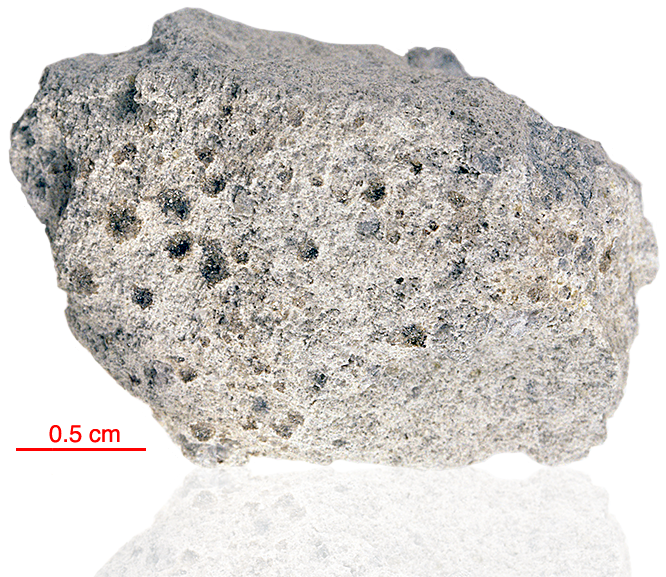
Fact sheet
67775 is a rake sample which is rather unique among Apollo 16 samples in being the only sample with intergranular texture and containing a high amount of mafic mineral clasts. It has fewer clasts of plagioclase-rich lithic fragments and a low Al2O3 content than other rake samples, although rotation 2 shows one of these. It also contains considerable metallic iron.
The sample weighed 6.6 grams before analysis and has not been dated.
Further details of this and other Apollo samples are here: http://curator.jsc.nasa.gov/lunar/
[KREEP is an acronym built from the letters K (the atomic symbol for potassium), REE (Rare Earth Elements) and P (for phosphorus). It is a geochemical component of some lunar impact breccia and basaltic rocks]
The Apollo 16 landing site was in the hilly region around Descartes crater in the lunar highlands. The landing spot was chosen to allow the astronauts to gather geologically older lunar material (Descartes Formation and the Cayley Formation) than the samples obtained in the first four landings, which were in or near lunar maria.
The mission lasted 11.1 days, with a stay on the lunar surface of 71 hours. The crew were on the lunar surface for 20.2 hours during which they traversed approximately 27 kilometers and collected approximately 96 kilograms of samples.
Apollo 16 was launched on 16 April 1972.






